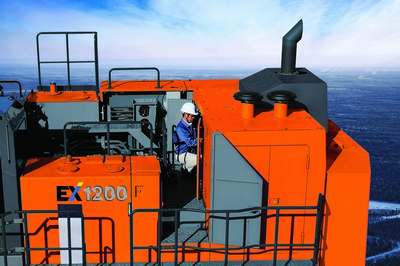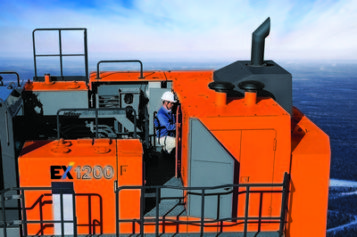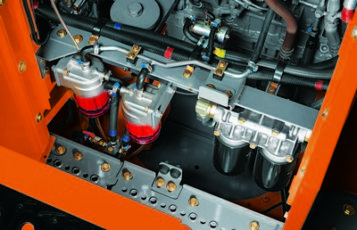
Keeping hydraulic oil clean is an essential part for the reliable operation of any hydraulic system. But clean oil can be a challenge for construction equipment, which is constantly exposed to dirt and water.
Shawn Riley, manager of Parts Marketing Operations for Hitachi’s construction product line, relays five tips to help ensure fluid is staying clean and your system is operating at maximum productivity.
- Filter hydraulic fluid even if it’s new. New fluid isn”t necessarily clean fluid. In most cases, the hydraulic system of a machine cleans the fluid to a higher level once in use. But this could be risky if the cleanliness of the initial fluid is unknown. As a general rule, the best practice is to filter caddy the fluid while topping off the machine.
- Invest in a filter caddy. A filter caddy can remove excess contamination after a repair and reduce contamination levels on machines having trouble maintaining the right balance on contaminants in hydraulic systems. A filter caddy can extend the life of fluid by keeping it clean and boosts the life of components. For practical purposes, the filter caddy should have the ability to read particle counts, humidity, and in some cases, viscosity of the fluid.
- Conduct oil analysis. Oil analysis can detect changes in the physical properties of the fluid that diminish its protective properties. Fluid analysis can detect the wear metals inside the machine being lost little by little from its components. Remember, an oil change alone is not a guaranty machines will survive longer — it does not replace the need for oil analysis.
- Avoid mixing different types of hydraulic fluids. By mixing types and brands of fluids, a new product is created with differing ratios of additives and even-base oils. Machines are very sensitive to these changes and can have negative reactions.
- Avoid intrusive repairs in the open. If the repair is necessary, always filter caddy the machine afterward. Take a fluid sample after a repair to make sure the machine complies with particle-count specifications. Additionally, don”t leave hoses uncapped and cover disassembled components properly.
This article originally appeared in Hitachi’s BREAKOUT publication, 3rd issue, 2014.




 Join our thriving community of 70,000+ superintendents and trade professionals on LinkedIn!
Join our thriving community of 70,000+ superintendents and trade professionals on LinkedIn! Search our job board for your next opportunity, or post an opening within your company.
Search our job board for your next opportunity, or post an opening within your company. Subscribe to our monthly
Construction Superintendent eNewsletter and stay current.
Subscribe to our monthly
Construction Superintendent eNewsletter and stay current.